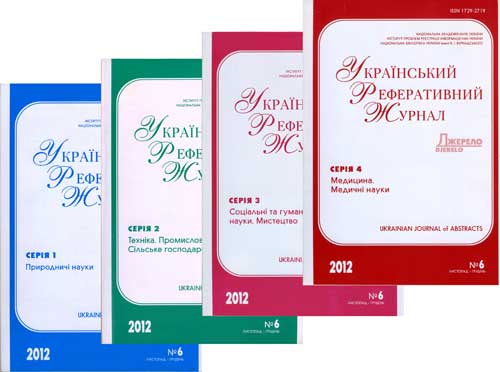РЕФЕРАТИВНА БАЗА ДАНИХ "УКРАЇНІКА НАУКОВА"
Abstract database «Ukrainica Scientific»
Бази даних
Реферативна база даних - результати пошуку
|
|
Пошуковий запит: (<.>ID=REF-0000698270<.>) | |||
|
Загальна кількість знайдених документів : 1 |
|||
Gerashchenko G. V. Expression of steroid and peptide hormone receptors, metabolic enzymes and EMT-related genes in prostate tumors in relation to the presence of the TMPRSS2/ERG fusion / G. V. Gerashchenko, L. V. Mevs, L. I. Chashchina, M. V. Pikul, O. O. Gryzodub, E. O. Stakhovsky, V. I. Kashuba // Experimental Oncology. - 2018. - 40, № 2. - С. 101-108. - Бібліогр.: 30 назв. - англ. Aim - to analyze an expression pattern of the steroid and peptide hormone receptors, metabolic enzymes and EMT-related genes in prostate tumors in relation to the presence of the TMPRSS2/ERG fusion; and to examine a putative correlation between gene expression and clinical characteristics, to definethe molecular subtypes of prostate cancer. The relative gene expression (RE) of 33 transcripts (27 genes) and the presence/absence of the TMPRSS2/ERG fusion were analyzed by a quantitative PCR. 37 prostate cancer tissues (T) paired with conventionally normal prostate tissue (CNT) and 21 samples of prostate adenomas were investigated. RE changes were calculated, using different protocols of statistics. We demonstrated differences in RE of seven genes between tumors and CNT, as was calculated, using the <$E2 sup {- DELTA C sub T }> model and the Wilcoxon matched paired test. Five genes (ESR1, KRT18, MKI67, MMP9, PCA3) showed altered expression in adenocarcinomas, in which the TMPRSS2/ERG fusion was detected. Two genes (INSR, isoform B and HOTAIR) expressed differently in tumors without fusion. Comparison of the gene expression pattern in adenomas, CNT and adenocarcinomas demonstrated that in adenocarcinomas, bearing the TMPRSS2/ ERG fusion, genes KRT18, PCA3, and SCHLAP1 expressed differently. At the same time, we detected differences in RE of AR (isoform 2), MMP9, PRLR and HOTAIR in adenocarcinomas without the TMPRSS2/ERG fusion. Two genes (ESRl and SRD5A2) showed differences in RE in both adenocarcinoma groups. Fourteen genes, namely AR (isoforms 1 and 2), CDH1, OCLN, NKX3-1, XIAP, GCR (ins AG), INSR (isoform A), IGFIR, IGF1R tr, PRLR, PRL, VDR and SRD5A2 showed correlation between RE and tumor stage. RE of four genes (CDH2, ESR2, VDR and SRD5A2) correlated with differentiation status of tumors (Gleason score). Using the K-means clustering, we could cluster adenocarcinomas in three groups, according to gene expression profiles. A specific subtype of prostate tumors is characterized by the activated ERG signaling, due to the presence of TMPRSS2/ERG fusion, and also by high levels of the androgen receptor, prolactin, IGF, INSR and PC A3. Conclusions: we have found the specific differences in expression of the steroid and peptide hormone receptors, metabolic enzymes and EMT-related genes, depending on the presence/absence of the TMPRSS2/ERG fusion in prostate adenocarcinomas, CNT and adenomas. We showed three different gene expression profiles of prostate adenocarcinomas. One of them is characteristic for adenocarcinomas with the TMPRSS2/ERG fusion. Further experiments are needed to confirm these data in a larger cohort of patients. Індекс рубрикатора НБУВ: Р569.696.2 Рубрики: Шифр НБУВ: Ж14160 Пошук видання у каталогах НБУВ | |||
| Національна бібліотека України імені В. І. Вернадського |
 |
| Відділ наукового формування національних реферативних ресурсів |
 |
| Інститут проблем реєстрації інформації НАН України |
Всі права захищені © Національна бібліотека України імені В. І. Вернадського